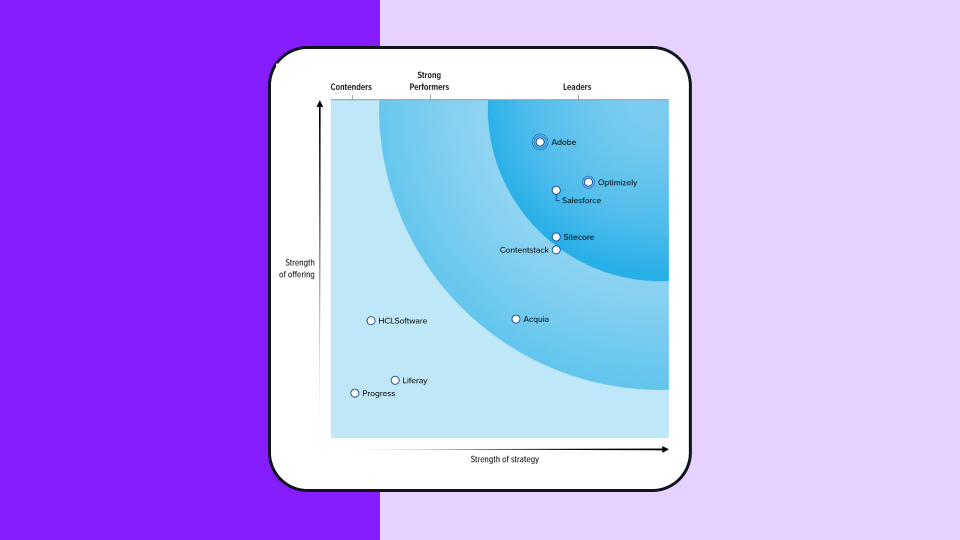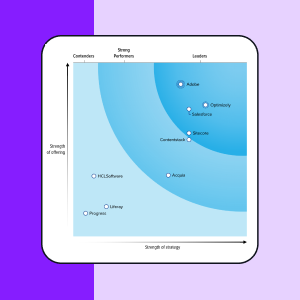Håndtering av funksjoner
Hva er funksjonsstyring?
Feature management refererer til prosessen med å utvikle, levere og optimalisere nye funksjoner for et produkt.
Det gjør det mulig for team å lansere funksjoner til bestemte brukere eller grupper, teste nye funksjoner og kontrollere brukeropplevelsen. Det innebærer administrasjon av funksjonsflagg, som er knapper som gjør det mulig for utviklere å slå funksjoner av og på uten at det kreves kodeendringer.
Du kan teste hvordan hver funksjon fungerer før den settes i produksjon, slik at du kan være sikker på at den nye funksjonen fungerer som forventet når den rulles ut.
Feature Management er spesielt nyttig for test på serversiden i dagens svært konkurranseutsatte automatiseringslandskap, der produktteamene raskt må lansere nye funksjoner for å holde seg foran konkurrentene. Det er viktig å ta kontroll over lanseringsprosessen og lansere nye funksjoner gradvis og bare til bestemte undergrupper av sluttbrukere, i stedet for alt på én gang. Dette gir mulighet for kontrollerte funksjonsutrullinger og test i sanntid, noe som sikrer at brukeropplevelsen og kundeengasjementet ikke påvirkes negativt.
Hva er et funksjonsflagg i funksjonsadministrasjon?
Et funksjonsflagg gjør det mulig for utviklere å aktivere/deaktivere funksjoner uten å distribuere ny kode. På denne måten kan teamene ha gradvise utrullinger, gjennomføre A/B-tester og til og med rulle tilbake når det er nødvendig.
For å forstå hvilken funksjon som bør aktiveres basert på bestemte kriterier, kan en funksjonsgate kontrollere denne funksjonaliteten for deg.
Hva er de beste fremgangsmåtene for å implementere funksjonsstyring?
Ved å følge fremgangsmåtene nedenfor kan du optimalisere funksjonsstyringen og programvareleveringsprosessen for å oppnå effektivitet i backend.
-
Styring
Etabler tydelige retningslinjer, navnekonvensjoner og eierskap for funksjonsflagg. Gjennomgå og oppdater med jevne mellomrom for å unngå opphopning av ubrukte funksjoner. -
Gjør det sikkert
Implementer riktige tilgangskontroller, og ta hensyn til personvernregler. Gjennomfør sikkerhetsrevisjoner for å sørge for at systemet er sikkert. -
Analyser
Optimaliser evalueringen for å minimere ytelsespåvirkningen. Overvåk og håndter eventuelle flaskehalser i ytelsen. -
Vurdere
Vurder og optimaliser systemets skalerbarhet regelmessig. -
Samarbeid
Involver relevante interessenter og oppretthold åpne kommunikasjonskanaler for oppdateringer og utplasseringer.
Livssyklus for funksjonsflagg
Slik ser livssyklusen til et funksjonsflagg ut i moderne programvareutvikling:
- Det starter med å opprette funksjonsflagg og hvordan de kan defineres, konfigureres og administreres i en plattform for funksjonsadministrasjon.
- Neste trinn er å distribuere funksjonsflagg i produksjonsmiljøer og aktivere dem for å kontrollere tilgangen til bestemte funksjoner.
- Deretter kan du overvåke ytelsen til funksjonsflaggene og samle inn analyser for å få innsikt i brukerengasjement, adopsjon og innvirkning.
- Til slutt må du avslutte og fjerne funksjonsflaggene når de ikke lenger er nødvendige, noe som understreker behovet for god planlegging og kommunikasjon.
Ulike typer utrullingsstrategier
Her er noen vanlige typer strategier for utrulling av funksjoner:
Trinnvis utrulling:
- Gradvis utrulling av funksjoner til undergrupper av brukere i løpet av kodedistribusjonen.
- Overvåk tilbakemeldinger fra klientsiden og ytelsesmålinger i hver fase.
- Begrenset lansering av saas-funksjoner til en liten gruppe brukere eller segmenter.
- Evaluer ytelsen og innhent tilbakemeldinger før en bredere lansering.
Målrettede utrullinger:
- Selektiv lansering av funksjoner til bestemte brukersegmenter basert på attributter.
- Gjør det mulig å skape personlige opplevelser og gjennomføre kontrollerte eksperimenter.
- Lansering av funksjoner til en utvalgt gruppe brukere for tilbakemelding og validering.
- Forbedre og finpusse funksjoner basert på tilbakemeldinger fra brukerne før en bredere lansering.
Mørk lansering:
- Stille lansering av funksjoner i produksjonsmiljøet uten at brukerne ser dem.
- Gjennomfør interne tester og aktiver funksjonen gradvis mens du overvåker.
Prosentvis utrulling:
- Øk gradvis prosentandelen av brukere som eksponeres for funksjonen over tid.
- Overvåk ytelsen for å sikre en smidig utrulling og utløse den beste ytelsen.
Hva er fordelene med funksjonsstyring?
Med funksjonsstyring kan programvareutviklingsteam eller produktteam distribuere nye funksjoner i trygg forvissning om at brukeropplevelsen ikke vil bli negativt påvirket. Gjennom produkteksperimenter kan produktteamene være sikre på at nye funksjoner lanseres når de er klare og testes for å sikre optimal ytelse.
Feature management gir en rekke bruksområder og fordeler med A/B-testing, blant annet
-
Risikoreduksjon
Teamene kan lansere nye funksjoner gradvis og overvåke hvordan de påvirker brukeropplevelsen. Denne tilnærmingen reduserer risikoen for feil eller bugs som kan påvirke brukeropplevelsen negativt. -
Raskere lanseringssykluser
Hvis du bruker funksjonsflagg, kan teamet ditt lansere funksjoner raskt og trygt, uten at det kreves kodeendringer eller lange sykluser med testing og høy kjøretid. På denne måten kan teamene iterere og forbedre programvaren i et raskere tempo. -
Forbedret brukeropplevelse
Ved å kontrollere brukeropplevelsen kan teamene levere en personlig tilpasset opplevelse til brukerbasen. Denne tilnærmingen øker brukerengasjementet og -tilfredsheten, noe som igjen fører til høyere lojalitetsgrad. -
Datadrevet utvikling
Med funksjonsstyring kan teamene samle inn data om brukeratferd og tilbakemeldinger, slik at de kan ta informerte beslutninger om utvikling og optimalisering av funksjoner.
Funksjonsstyring i Optimizely
Funksjonsstyring har blitt en viktig del av utviklingsprosessen, spesielt i DevOps-arbeidsflyten. I likhet med API-administrasjon handler funksjonsadministrasjon om å tilpasse kravene til virksomheten og den tekniske stakken. Ved å bruke en plattform for funksjonsadministrasjon som Optimizely kan utviklingsteamene effektivisere test- og distribusjonsprosessene. Du kan enkelt koble kodeendringer fra funksjonsutgivelser, noe som gir raskere iterasjon og tilbakeføringer om nødvendig.
Du får også sanntidsmålinger og KPI-er, slik at produktsjefer kan optimalisere funksjonsutgivelsene og spore fremdriften. Optimizelys kommandosenter gjør det mulig å kontrollere hele livssyklusen for produktutvikling, sammen med funksjonsflagg, utrullinger og segmenterte A/B-tester. Hele denne prosessen med progressiv levering kan kontrolleres uten å distribuere ny kode.
I 2024 ønsker de fleste team å bygge sine egne betingede systemer (featuretoggle, feature gate, release toggle, feature bit, canary testing osv.) eller styring av feature flags. Det interne systemet fører ofte til kompleksitet og leveringsforsinkelse ettersom ingeniørene må jobbe hardere for å konvertere testvinnere til fungerende kode. Alt dette bare for å distribuere nye utgivelser og gjøre oppdateringer av en eksisterende funksjon eller rulle ut en ny funksjon fra bunnen av. Det er bedre å bruke leverandører av verktøy for funksjonsadministrasjon som kan håndtere ulike programmeringsspråk og komplekse utfordringer som større ingeniørteam står overfor.
Så hvis du er et team som ønsker å unngå kaos, fremme en kultur for eksperimentering og samtidig øke hastigheten til markedet og opprettholde et høyt kvalitetsnivå, kan du komme i gang med vår feature management-løsning.

